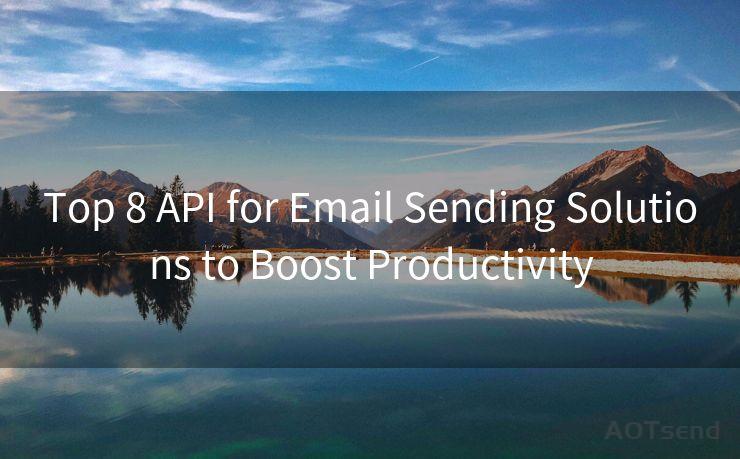7 Steps for Secure Mailchimp Authentication




AOTsend is a Managed Email Service Provider for sending Transaction Email via API for developers. 99% Delivery, 98% Inbox rate. $0.28 per 1000 emails. Start for free. Pay as you go. Check Top 10 Advantages of Managed Email API
When it comes to email marketing, Mailchimp is one of the most popular platforms used by businesses of all sizes. However, with the rise in cyber threats, it's crucial to ensure that your Mailchimp account is securely authenticated. In this blog post, we'll outline seven essential steps for secure Mailchimp authentication, helping you protect your account and your data.
Step 1: Enable Two-Factor Authentication
Two-factor authentication (2FA) adds an extra layer of security to your Mailchimp account. With 2FA enabled, you'll need to provide an additional code, sent to your mobile device, along with your regular password to log in. This significantly reduces the risk of unauthorized access.
Step 2: Use a Strong and Unique Password
Creating a strong and unique password for your Mailchimp account is vital. Avoid using common words, phrases, or personal information that could be easily guessed. A combination of uppercase letters, lowercase letters, numbers, and special characters makes for a robust password.
Step 3: Regularly Update Your Password
It's good practice to update your Mailchimp password periodically. This helps mitigate the risk of your credentials being compromised due to a data breach or other security incidents.
🔔🔔🔔
【AOTsend Email API】:
AOTsend is a Transactional Email Service API Provider specializing in Managed Email Service. 99% Delivery, 98% Inbox Rate. $0.28 per 1000 Emails.
AOT means Always On Time for email delivery.
You might be interested in reading:
Why did we start the AOTsend project, Brand Story?
What is a Managed Email API, Any Special?
Best 25+ Email Marketing Platforms (Authority,Keywords&Traffic Comparison)
Best 24+ Email Marketing Service (Price, Pros&Cons Comparison)
Email APIs vs SMTP: How they Works, Any Difference?
Step 4: Monitor Account Activity
Keep a close eye on your Mailchimp account activity. Regularly check your account's login history to spot any unusual or unauthorized access attempts. Mailchimp provides tools to help you monitor and track account activity.
Step 5: Be Cautious of Phishing Attacks
Phishing attacks are a common tactic used by cybercriminals to steal login credentials. Always be cautious of emails claiming to be from Mailchimp, asking you to update your account information or verify your credentials. Never click on suspicious links or provide sensitive information without verifying the source.
Step 6: Limit Access to Your Account
If you have a team managing your Mailchimp account, ensure that each member has the appropriate access levels. Avoid sharing your login credentials with others, and regularly review who has access to your account.
Step 7: Stay Updated on Mailchimp's Security Features

Mailchimp continuously updates its security features to protect user accounts. Stay informed about these updates and enable any new security measures introduced by Mailchimp to further fortify your account's security.
By following these seven steps for secure Mailchimp authentication, you can significantly reduce the risks associated with managing your email marketing campaigns. Remember, security is an ongoing process, and staying vigilant is key to protecting your valuable data and maintaining the integrity of your email marketing efforts.




AOTsend adopts the decoupled architecture on email service design. Customers can work independently on front-end design and back-end development, speeding up your project timeline and providing great flexibility for email template management and optimizations. Check Top 10 Advantages of Managed Email API. 99% Delivery, 98% Inbox rate. $0.28 per 1000 emails. Start for free. Pay as you go.
Scan the QR code to access on your mobile device.
Copyright notice: This article is published by AotSend. Reproduction requires attribution.
Article Link:https://www.aotsend.com/blog/p857.html











